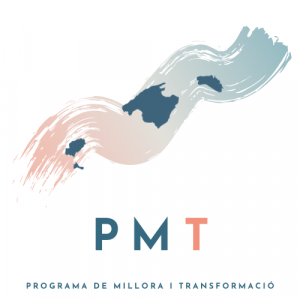Fishing has been more than a daily practice—it is a living thread connecting ancient ingenuity to modern imagination. From the earliest bone hooks forged by hands in prehistoric riverbeds to today’s high-tech sonar-guided vessels, fishing’s evolution mirrors humanity’s journey through nature, culture, and innovation. This legacy, rich in craftsmanship, ritual, and community, finds new life in entertainment, tourism, and storytelling—transforming survival into shared heritage.
1. The Ancestral Craft: Tools, Techniques, and Cultural Symbolism Across Civilizations
a. Roots of fishing tools in prehistoric societies and their transformation into cultural artifacts
- Regional craftsmanship traditions—from bone hooks to carved wooden rods—and their symbolic meanings
- Across continents, early fishers shaped tools not only for function but for meaning. In coastal Australia, shell fishhooks carved with ancestral motifs signaled clan identity, while in Mesoamerica, obsidian-tipped spears combined lethal precision with spiritual iconography. Bone, antler, and wood were transformed through fire and skill into objects that carried stories—each hook, net, or line a vessel of cultural memory. These tools were not mere implements; they embodied a deep reverence for water as life-giver and mystery.
- Prehistoric bone hooks found in Tamil Nadu date back 8,000 years, revealing early mastery of material adaptation.
- Polynesian fish traps built from coral and driftwood demonstrate complex engineering adapted to tidal rhythms.
- Carved wooden rods from the Amazon tribes often bore totemic carvings—spirals, serpents, or animal figures—marking them as sacred extensions of the fisher’s identity.
How ancient designs reflect ingenuity and spiritual connection
“The fisher’s line is not just thread—it is memory braided with water.” – Oral tradition from the Mekong Delta
2. From Subsistence to Sacred: Fishing as a Cultural Rite and Identity Marker
a. Ritual practices embedded in fishing communities—seasonal ceremonies, totemic reverence, and oral lore
- Seasonal ceremonies and totemic reverence
- In many Pacific Islander cultures, fishing bans during spawning seasons were not just ecological wisdom but sacred pacts with ancestral spirits. The Tlingit of the Pacific Northwest celebrated salmon runs with elaborate potlatches, where stories of clan guardianship were chanted, reinforcing identity and responsibility to the river’s bounty.
- Fishing communities in Kerala, India, invoke the goddess Mahalakshmi at dawn launches, blending devotion with seasonal abundance.
- Inuit elders recount creation myths tied to sea mammals, framing fishing as a covenant between humans and the sea.
- Oral lore—passed through generations—taught not only technique but ethics: respect for the catch, balance with nature, and shared labor.
Fishing as social cohesion and knowledge transfer
Beyond survival, fishing binds communities through cooperative models. In the Philippines, *bahay kubos* (stilt houses) host communal net mending, while among the Sami in Scandinavia, seasonal fishing parties reinforce kinship and mutual aid. These practices ensured survival and preserved ecological knowledge—passed not just through words, but through shared hands and eyes on the water.
2.3 Cooperative fishing models and their impact on village economies and governance
- Shared labor and collective knowledge strengthening resilience against environmental change
- In Kerala’s backwaters, *thodu* groups pool resources to maintain bamboo nets and coordinate seasonal hauls, turning individual effort into collective strength. This cooperative ethos enabled adaptation to shifting monsoon patterns and declining fish stocks—proving that unity is as vital as skill.
- Preserving fishing heritage through narrative and art
- Songs like the Sami *joik* or Filipino *kundiman* sung during boat journeys encode ecological knowledge and ancestral values. Carved wooden fish puppets in Borneo and hand-painted nets from Vanuatu serve as visual stories—tools of memory that transcend generations.
- Oral epics such as the Polynesian *Tangaroa* myths teach navigation and ocean respect through mythic heroes.
- Artisanal boat designs in Southeast Asia incorporate symbolic carvings reflecting local cosmology and protection spirits.
- Modern murals in fishing villages now depict past catches and ecological shifts, merging tradition with contemporary awareness.
- Ancestral fishing traditions inspire modern media, tourism, and experiential craftsmanship
- The resurgence of traditional fishing in films, documentaries, and virtual reality experiences—such as immersive river journeys—connects audiences to deep ancestral wisdom. In Japan, *ikebana* flower arrangements inspired by aquatic life are now part of theater performances celebrating seasonal fishing. Eco-tourism thrives on authentic village fishing tours, where travelers learn not just technique, but respect for water’s spirit.
- Preserving heritage amid rapid modernization
- Despite industrialization, many fishing communities uphold traditions—from blessing boats before seasonality to passing down knot-tying rituals. In Iceland, sailing practices rooted in Norse seafaring wisdom guide modern fleet behavior, blending history with safety. These values anchor identity, ensuring culture endures even as tools change.
| Community Role in Fishing Resilience | Key Impact |
|---|---|
| Cooperative net repair | Reduced downtime during monsoon damage |
| Shared boat maintenance | Extended vessel lifespan and reduced individual cost |
| Collective decision-making on fishing zones | Prevented overfishing and protected spawning grounds |
2.4 The role of storytelling, songs, and art in preserving fishing heritage beyond mere survival
3.1 Echoes in Modern Entertainment: Translating Legacy into Contemporary Narrative
a. How ancestral fishing traditions inspire modern media, tourism, and experiential craftsmanship
Revival of artisanal fishing as cultural preservation
Artisanal fishing is no longer just a way of life—it is a cultural movement. Craftsmen in Thailand restore ancient net-weaving methods, not only preserving technique but boosting local pride and sustainable livelihoods. In Norway, *Rorbuer* (traditional fishing cottages) are restored as living museums, attracting visitors seeking authentic connection to seafaring heritage.
4.1 Returning to Evolution: Where Craft and Community Meet Technological Progress
Tracing continuity from handcrafted tools to sonar-enabled vessels as a thread in fishing’s technological lineage
-
From bone hooks to GPS-guided trawlers, fishing technology has evolved not by erasing tradition, but by layering innovation upon it. The same reverence for the water that guided prehistoric fishers now informs sonar precision and sustainable gear—showing that progress need not sever roots.
How cultural values and communal identity persist amid rapid modernization
Envisioning a future where fishing’s hidden legacy fuels innovation grounded in heritage and connection
-
Today’s fusion of ancestral insight and high-tech design—like biodegradable nets inspired by traditional materials or AI-assisted seasonal forecasts paired with oral lore—shows fishing’s hidden legacy as a wellspring of sustainable innovation. This future honors the past not as relic, but as living guide.
“The water remembers what we forget—our tools, our stories, our care.” – Fishing elder, Lakshadweep
Explore more about the enduring journey of fishing’s craft and culture here.







